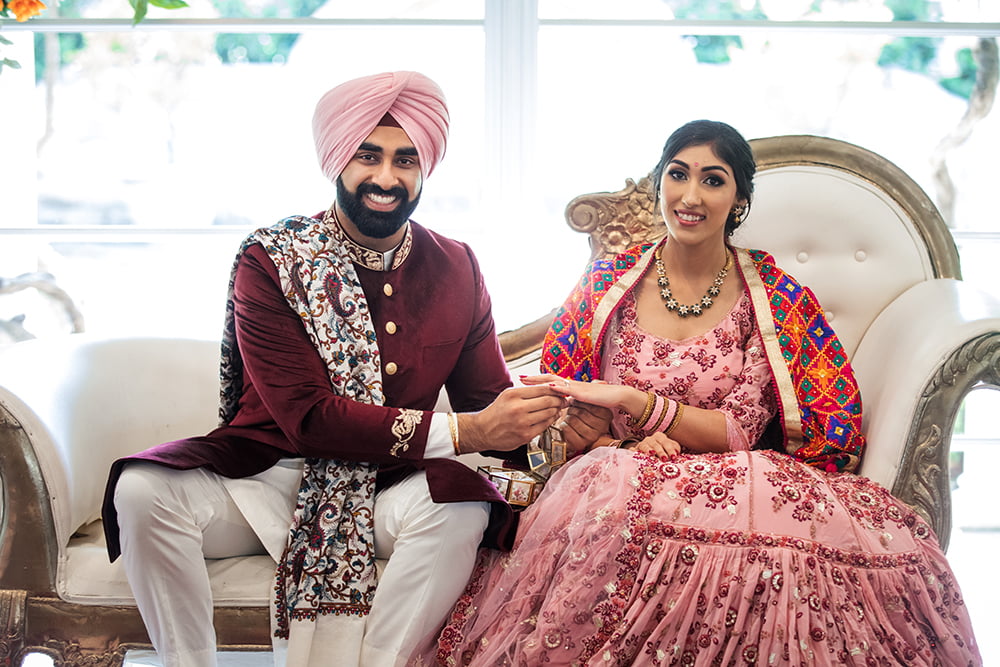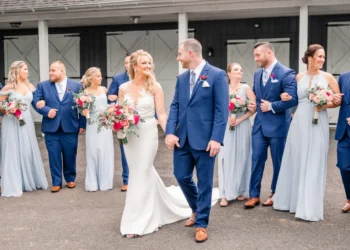Sikh weddings, known as Anand Karaj, are a beautiful blend of spirituality, tradition, and celebration. Root in Sikhism’s core values, these weddings are a reflection of the Sikh way of life, emphasizing equality, simplicity, and devotion. we will take you on a journey through the enchanting Sikh wedding rituals, shedding light on the significance of each step and the vibrant tapestry of traditions that make these weddings truly unique.
Kurmai
Weddings are not just ceremonies; they are a beautiful amalgamation of cultures, traditions, and rituals. Among the many diverse wedding customs around the world, the Punjabi community’s Kurmai rituals stand out as a fascinating and meaningful celebration. We will take a closer look at the rich tradition of Kurmai rituals, exploring their significance and the various customs that make them so special.

Kurmai rituals are a beautiful and vibrant part of Punjabi weddings, embodying the essence of family, love, and tradition. These pre-wedding customs play a significant role in strengthening familial bonds, and they are a testament to the rich cultural heritage of the Punjabi community. In an era where wedding customs are evolving, Kurmai remains a cherish tradition that continues to bring joy and unity to Punjabi families worldwide.
Chunni Chadai
Chunni Chadai, also known as Chunni Chadhana or Chunni Ceremony, is a heartwarming and vibrant pre-wedding ritual deeply root in Indian culture. This ritual holds immense significance in various regions of India and is an integral part of a bride’s journey towards matrimony. we will explore the captivating traditions and customs associated with Chunni Chadai, shedding light on the beauty and importance of this age-old celebration.

Chunni Chadai is a ceremony that typically takes place a few days before the wedding. It symbolizes the acceptance of the bride-to-be into the groom’s family, as well as the start of her new life as a married woman. This ritual not only holds cultural significance but also adds to the excitement and anticipation surrounding the upcoming nuptials.
Mehndi and Chooda Ceremony
Sikh weddings are a rich tapestry of vibrant traditions, rituals, and customs that celebrate the union of two souls. Among the numerous ceremonies that make up a Sikh wedding, the Mehndi and Chooda ceremonies hold a special place. These events are filled with cultural significance and joyous celebrations, providing a delightful insight into Sikh traditions. we will delve into the Mehndi and Chooda ceremonies, exploring their history, customs, and the significance they hold in Sikh weddings.

The Mehndi ceremony is a pre-wedding ritual that is all about applying intricate henna designs to the bride’s hands and feet. It is a colorful and joyous occasion where friends and family come together to celebrate the upcoming union while adorning the bride in beautiful henna art.
Vatna
The Vatna ceremony is deeply rooted in Sikh tradition and culture. It is a pre-wedding ritual that takes place a few days before the wedding day. This ceremony is essentially a cleansing and beautification ritual for the bride and groom. The term “Vatna” refers to a mixture of turmeric, yogurt, and mustard oil, which apply to the bride and groom’s skin to enhance their complexion and make them glow on their wedding day. While the exact historical origins of the Vatna ceremony are not well-documented, it has been an integral part of Sikh weddings for generations.

The Vatna ceremony is symbolic of the cleansing and purifying process that the bride and groom undergo before embarking on their new journey together as husband and wife. Turmeric, with its natural antiseptic properties, is believe to cleanse the skin and remove impurities, leaving the bride and groom radiant.
Gharoli
The Gharoli Ceremony is a pre-wedding ritual that is part of the Anand Karaj, the Sikh wedding ceremony. It is performe on the morning of the wedding day and symbolizes the purification and blessing of the bride and groom before they embark on their journey together as a married couple.

The Gharoli Ceremony is a beautiful and symbolic ritual in Sikh weddings. It reflects the Sikh belief in purity, humility, and the importance of starting a new life together with the blessings of the Guru. This ceremony not only cleanses the body but also prepares the couple spiritually for the sacred vows they will exchange in the Anand Karaj ceremony.





